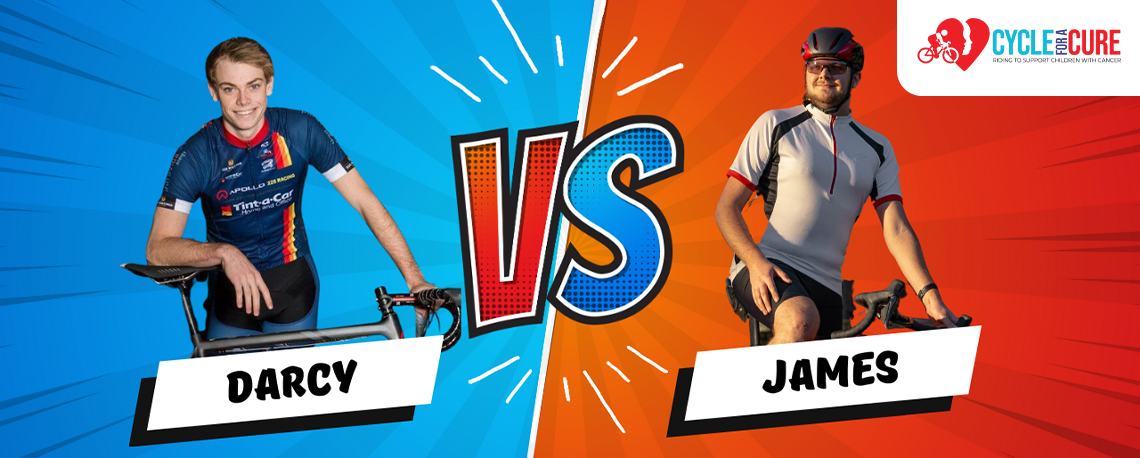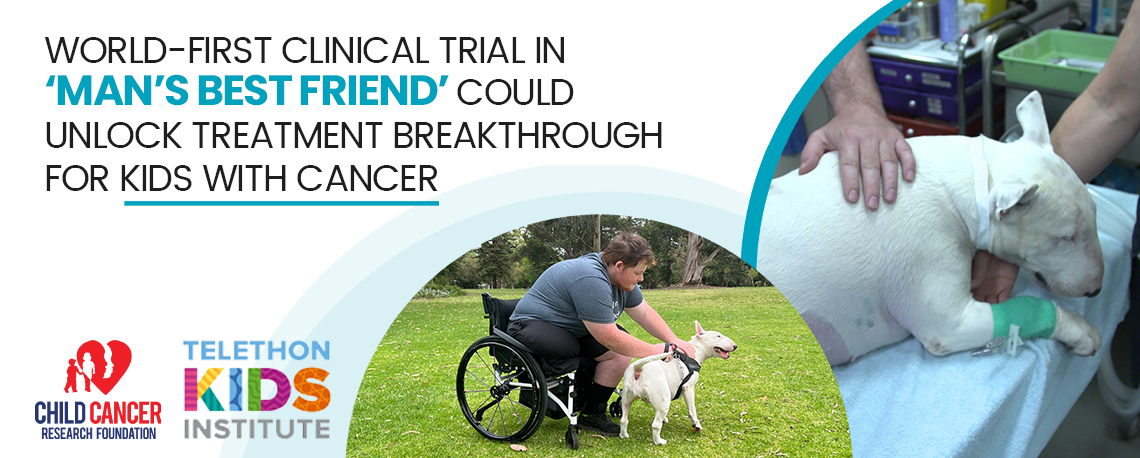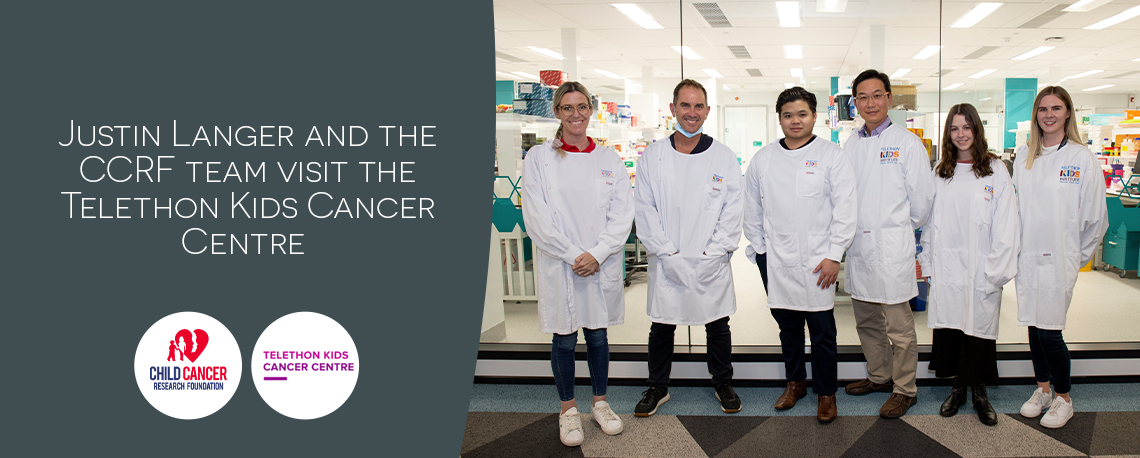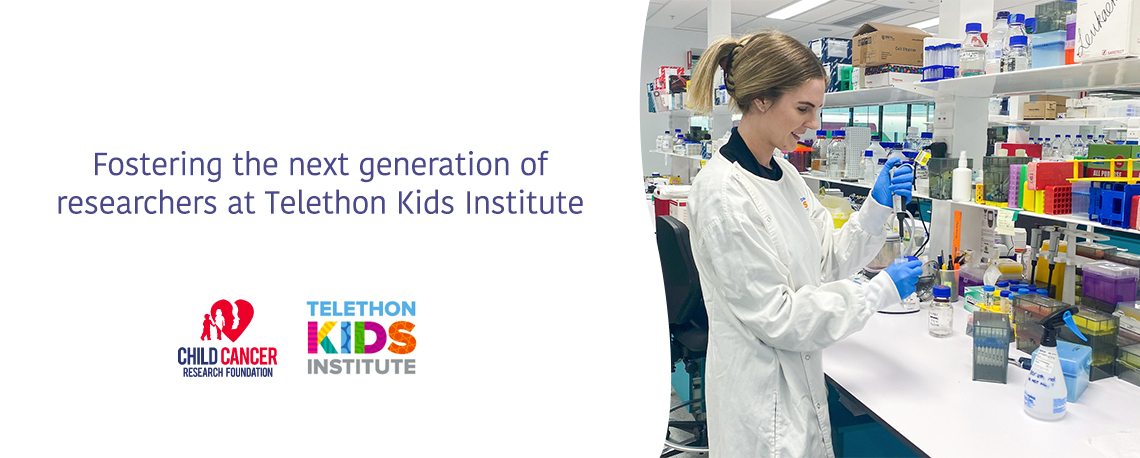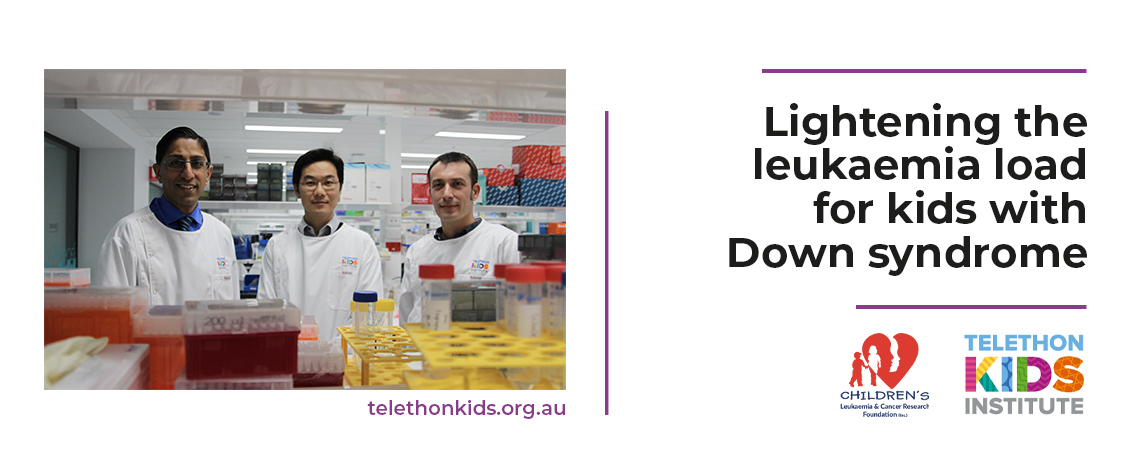Published: August 2nd, 2022
One of the great things about the research projects that CLCRF funds is the opportunity to foster the next generation of researchers. The Telethon Kids Institute has around 100 students enrolled from several universities around Australia, conducting research projects from laboratory-based projects to population-wide studies.
We recently met with Taylor Ferguson, a Curtin University student who has commenced the first year of her PhD in Associate Professor Rishi Kotecha and Dr Laurence Cheung’s Leukaemia Translational Research laboratory. Taylor is continuing her studies from last year, where she completed her Honours degree alongside the respected researchers.
As part of this team, Taylor has been looking at a specific subtype of leukaemia, which has a rearrangement of the KMT2A gene and is associated with a poor prognosis. “Previously, my lab did a large drug screen to identify some novel agents that could be used,” said Taylor. “So, my project is to further investigate these novel agents in detail and move them forward in the preclinical setting.” The ultimate goal is for these novel agents to be translated into clinical trials.
Confessing that this was the only Honours project she applied for, Taylor had her heart set on the opportunity to help make a difference for future generations of children. “I did a mini research project at university which was to do with infants,” Taylor explained. “This drew my attention as to how vulnerable they are, especially to the side effects of chemotherapies. So, when I saw this project, I decided that it would be something I’d be interested in, to work towards improving outcomes for these infants.”
The prognosis of infants diagnosed under the age of one with KMT2A-rearranged acute lymphoblastic leukaemia is poor, with a 5-year event-free survival rate of less than 40%. “Because they are babies, they don’t have the ability to tolerate the chemotherapies the same way that older people might be able to,” explained Taylor. “So, if you’re trying to reduce the leukaemia disease burden, you have to increase the intensity of the chemotherapy. Unfortunately, babies can’t tolerate these high doses.”
There is a significant need to find new therapies to improve outcomes for these babies, which can only come with more funding. “Just to give these babies a fighting chance, especially those with this aggressive gene rearrangement, is the reason why extra funding is needed.”
When asked what her favourite thing about her job has been so far, Taylor stated that she has enjoyed becoming part of a team. “At university, it’s very much everyone for themselves and you do your own work,” she explained. “But in this team environment, you realise everyone is working towards a common goal. And so, it’s like a little community. Everyone wants to improve the outcomes for children with cancer, and specifically in my team, it’s for infants with leukaemia.”
Although now finding her feet in research, Taylor did not always know that this was the work she wanted do. “I kind of went through every career that I possibly could. When I first went to university, I wasn’t quite sure what I wanted to do. The more I got into science, the more I decided how much I loved it. And research is like focused science in a specific area. You also have outcomes that you can build off, and which other people can use to improve treatments or therapies.”
Grateful to be placed in this role, Taylor expressed how lucky she feels to be at the Telethon Kids Institute. “It’s a very good environment and the team that I have is just amazing,” she said. “Everyone’s been very supportive, and they all help me whenever I need it, which, at the beginning was a lot.”
Taylor explained that she would love to stay in the realm of leukaemia research. “I really enjoy the work,” she said. “It’s such a horrible disease, if there’s anything I can do to contribute to the research for it, that’s the research I want to do.”
We are delighted to be able to support young researchers like Taylor as they aim to improve the lives of children with cancer. You can help support Taylor’s research, and give infants with leukaemia a fighting chance by making a donation towards childhood cancer research today. Simply head to www.clcrfgiving.org
Behind the lab coat:
What do you like to do in your spare time?
I’m a bit of a homebody. I really enjoy spending time with my family. We moved from Scotland and it’s only the five of us here, so we’re very close.
I like to just relax and just have a good time reading books, going out with friends, things like that. I’m a very simple person.
What’s your favourite genre to read?
I usually read sci-fi or fantasy.
What’s your favourite quote?
My parents always tell me take every opportunity and you only fail if you never tried. They actually say that to me quite a bit.
It’s especially relevant in research, because not everything goes according to plan but you have to keep trying and keep persisting. Resilience is what gets outcomes at the end.
